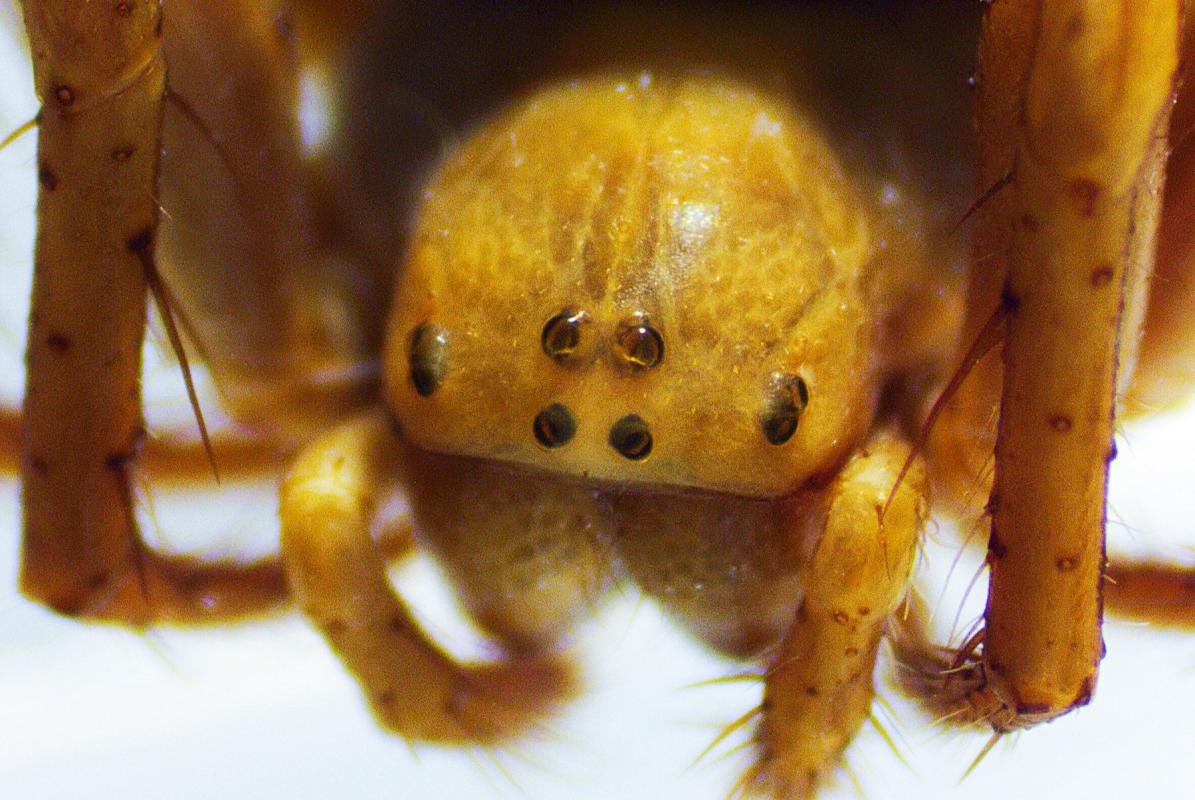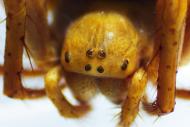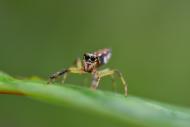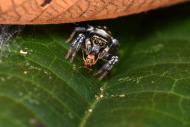Researchers from the Museum für Naturkunde Berlin, the University of Oxford and Harvard University have investigated for the first time how the growth of the usually four different pairs of eyes is determined in spiders. They found that spiders can control the growth of the eye pairs and adjust them as required. This discovery prompted the researchers to investigate how the different pairs of eyes in spiders have evolved over 400 million years. The study was published in Current Biology.
Many animals have two eyes of equal size, ourselves included. Larger eyes are often more sensitive and better able to resolve fine details, and many species are born with disproportionately large eyes to facilitate this from a young age. However, these come at greater energetic cost, so the relationships between eye size and body size overall must be carefully balanced, across both the lifetime of an individual and the evolution of a species. We know that, generally speaking, eyes are larger in species that rely more heavily on their vision to hunt, communicate, and detect predators, especially those that do so in the dark. But what happens when an individual has more than one pair of eyes, and these eyes can be different sizes? A new study published this week in Current Biology, led by researchers at the Museum für Naturkunde, University of Oxford, and Harvard University, examined this question for the first time in spiders.
Most spiders have four pairs of eyes that can vary substantially in their size and their abilities, which range from the very simple (detecting light and dark) to the highly sophisticated (high resolution colour vision). These features have historically been used to identify different families of spiders, but their relationships and evolutionary history hadn’t been studied in detail, making them ideal subjects for the study.
Researchers first sought to disentangle the relationships that govern the growth of different eye pairs by measuring the eyes and bodies of more than 1,000 spiders from the collections of the Oxford University Museum of Natural History. While species that use their vision to hunt generally had larger eyes from early in life, the authors were surprised to find that different pairs of eyes could grow at different speeds within these species. Eyes that contributed to hunting, communication, and other important behaviours were not only larger than eyes that didn’t, but appeared to be more tightly controlled in terms of their size and growth. "The ability to control and adapt the growth of specific eye pairs unlocks a lot of evolutionary potential", explained Dr. Lauren Sumner-Rooney, senior author of the study. "Species that need high-quality vision can invest in one or two pairs of eyes without having to 'overspend' on the others".
This discovery prompted the researchers to dig deeper into how different eye pairs had evolved across all spiders over 400 million years.
They found that this modular approach to the visual system has been exploited by many groups of spiders over time, and that several ecological factors played a role. As well as visual hunters having generally larger and more variable eyes, they found that web-builders had more uniform eye size, and that the lower limit for eye size was larger in nocturnal species. Animals that used vision to actively pursue prey were also more likely to have large eyes than those that ambushed them from a static hiding place, indicating that pursuit is a more visually demanding task, but one worthy of energetic investment. Their analyses not only confirmed evolutionary shifts in spiders known to use their vision to hunt, but identified previously unknown shifts in species whose behaviour has not yet been studied. "These animals could be of particular interest to future researchers wanting to understand vision in spiders", said Sumner-Rooney.
The study is the first to address the evolution of a modular visual system in this way, but may have implications for other animals that have many eyes, which can include insects, molluscs, and worms. Kaylin Chong, lead author of the study, explained "with much previous research focused on animals with a single pair of eyes, we wanted to give a fresh comparative perspective by examining the world through the multiple eyes of a spider. This provides new insights into the allometric relationships in and between these modular visual systems."



